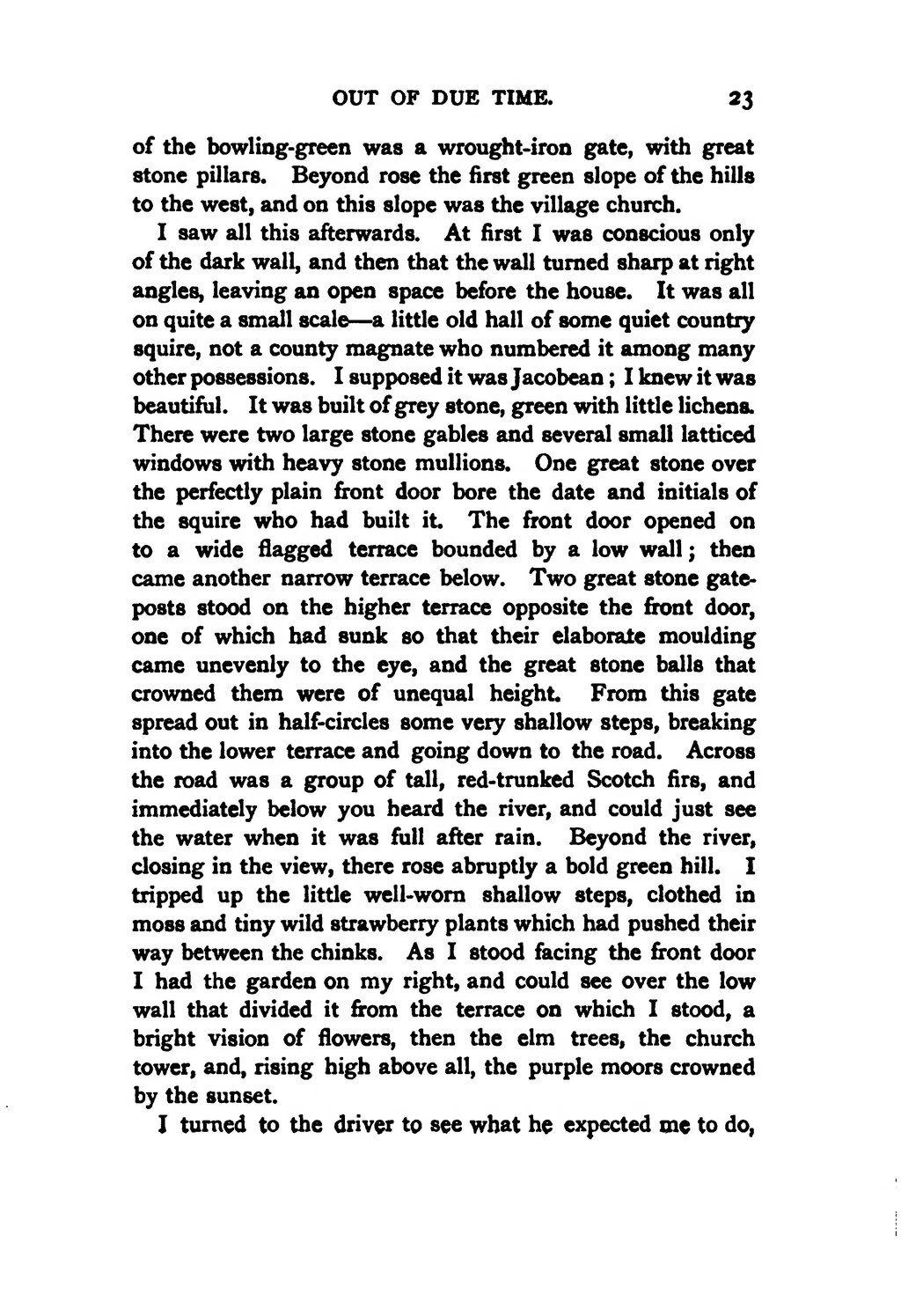of the bowling-green was a wrought-iron gate, with great stone pillars. Beyond rose the first green slope of the hills to the west, and on this slope was the village church.
I saw all this afterwards. At first I was conscious only of the dark wall, and then that the wall turned sharp at right angles, leaving an open space before the house. It was all on quite a small scale—a little old hall of some quiet country squire, not a county magnate who numbered it among many other possessions. I supposed it was Jacobean; I knew it was beautiful. It was built of grey stone, green with little lichens. There were two large stone gables and several small latticed windows with heavy stone mullions. One great stone over the perfectly plain front door bore the date and initials of the squire who had built it. The front door opened on to a wide flagged terrace bounded by a low wall; then came another narrow terrace below. Two great stone gateposts stood on the higher terrace opposite the front door, one of which had sunk so that their elaborate moulding came unevenly to the eye, and the great stone balls that crowned them were of unequal height. From this gate spread out in half-circles some very shallow steps, breaking into the lower terrace and going down to the road. Across the road was a group of tall, red-trunked Scotch firs, and immediately below you heard the river, and could just see the water when it was full after rain. Beyond the river, closing in the view, there rose abruptly a bold green hill. I tripped up the little well-worn shallow steps, clothed in moss and tiny wild strawberry plants which had pushed their way between the chinks. As I stood facing the front door I had the garden on my right, and could see over the low wall that divided it from the terrace on which I stood, a bright vision of flowers, then the elm trees, the church tower, and, rising high above all, the purple moors crowned by the sunset.
I turned to the driver to see what he expected me to do,
